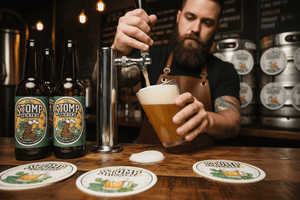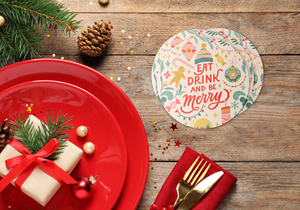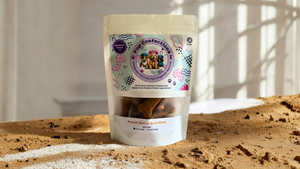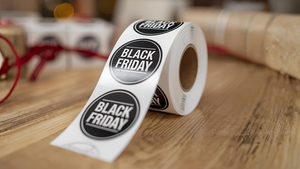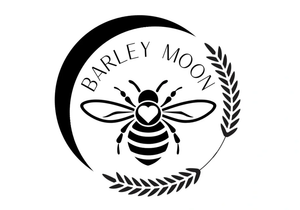How to Create a Mascot: 7 Tips for Designing Your Character

What would Geico be without its Gecko? Or Planters without Mr. Peanut? These mascots have become icons synonymous with the brands they represent, transforming them from mere products into memorable parts of popular culture.
But mascots aren’t just for household brand names. Your small business can also leverage them to build a unique presence and foster a deeper connection with your audience.
Wondering how to create your own mascot? Let’s explore how to design a mascot that resonates with your brand identity and appeals to your customers.

Why Create a Brand Mascot?
Brand mascots offer a fun and memorable way to enhance visibility, engagement, and customer loyalty. Take Tony the Tiger or the Pillsbury Doughboy — they’re timeless representatives of their brands that boost recognition and emotional connection. Mascots also help differentiate a brand from its competitors by providing an engaging character that stands out in a crowded market.
Additionally, mascots are a powerful opportunity to create branded merchandise, which can become a source of revenue as well as a marketing tool. Whether your goal is to raise awareness, differentiate your business, or build brand loyalty, mascots can transform customer interactions with your business.

How to Design a Brand Mascot
Designing a brand mascot is an iterative process that involves reflecting on your target audience, color scheme, customer feedback, and more. Here are the essential steps to create a character that perfectly represents your brand:
Consider Your Audience
Understanding your audience is crucial in brand mascot design and will help you determine whether a mascot is right for your business. The character should resonate with the demographic you’re targeting. It’s not just about looks but also personality and relevance. For instance, a children’s toy store might benefit from a playful, friendly animal mascot, while a tech company might opt for a sleek, futuristic robot character.
Choose Your Form
Your mascot’s physical form should reflect your industry and brand personality. Options range from anthropomorphic animals and objects to more abstract or human-like characters. For example, a sports bar might choose a fierce animal to symbolize competitiveness, while a craft brewery might go for an anthropomorphic hop monster as its mascot.
Sketch It Out
Once you have your basic idea, begin with simple sketches to explore various concepts and poses. A mascot’s posture conveys its personality, whether it’s confident, welcoming, mischievous, or any other trait. Consider iconic mascots like Ronald McDonald, whose friendly, open pose invites interaction, or the Kool-Aid Man, known for his dynamic entrance. Your character’s pose says a lot about their demeanor and how your brand projects itself into the world.

Align Your Colors
Your brand’s color palette should be reflected in your character design to ensure consistency across all marketing materials and reinforce brand recognition. So, if your logo features green and yellow, these colors should also be incorporated into the mascot’s design, making the character unmistakably part of your brand.
Get Feedback
Once you have a preliminary design, gather feedback through focus groups or customer surveys. This step is important to avoid potential missteps and make sure the mascot resonates well with your target audience. Don’t just ask your customers whether they like the design or not. Craft questions about specific features, like the mascot’s color scheme, pose, and outfit, and always make sure to ask follow-ups to find out why customers feel the way they do. This information will be invaluable as you create the final version of your character.
Tweak and Finalize
Use the feedback to perfect your mascot’s design. Depending on how your audience reacts, this may mean making small tweaks or more substantial revisions. For example, if your audience finds your mascot’s wide grin a bit too cheesy, redraw them with a more subtle, closed-mouth smile. Or, if they find the concept of a teddy bear mascot too childish, go back to the drawing board and craft a new concept based on a cute real-world animal like a koala. The goal is to finalize a design that speaks to your customers and authentically embodies your brand.
Plan a Debut
Launching your mascot should be as strategic as launching a new product. Prepare a comprehensive marketing plan that includes updating branding materials like labels, making social media announcements, and even creating merchandise like custom stickers or apparel featuring your mascot. This full-scale rollout helps maximize the mascot’s impact and ensures it becomes a recognizable face of your brand.

Bring Your Brand Mascot to Life with Stomp
A well-designed mascot can become a cherished part of your brand, forging deeper connections with your audience and setting your business apart in a crowded market. With these steps, you’re ready to create a mascot that represents your brand and drives lasting customer loyalty.
Ready to bring your mascot-terpiece to life? Design your custom products with Stomp today.

- Tags: Design Labels Small Business Stickers
- Nashira Edmiston
